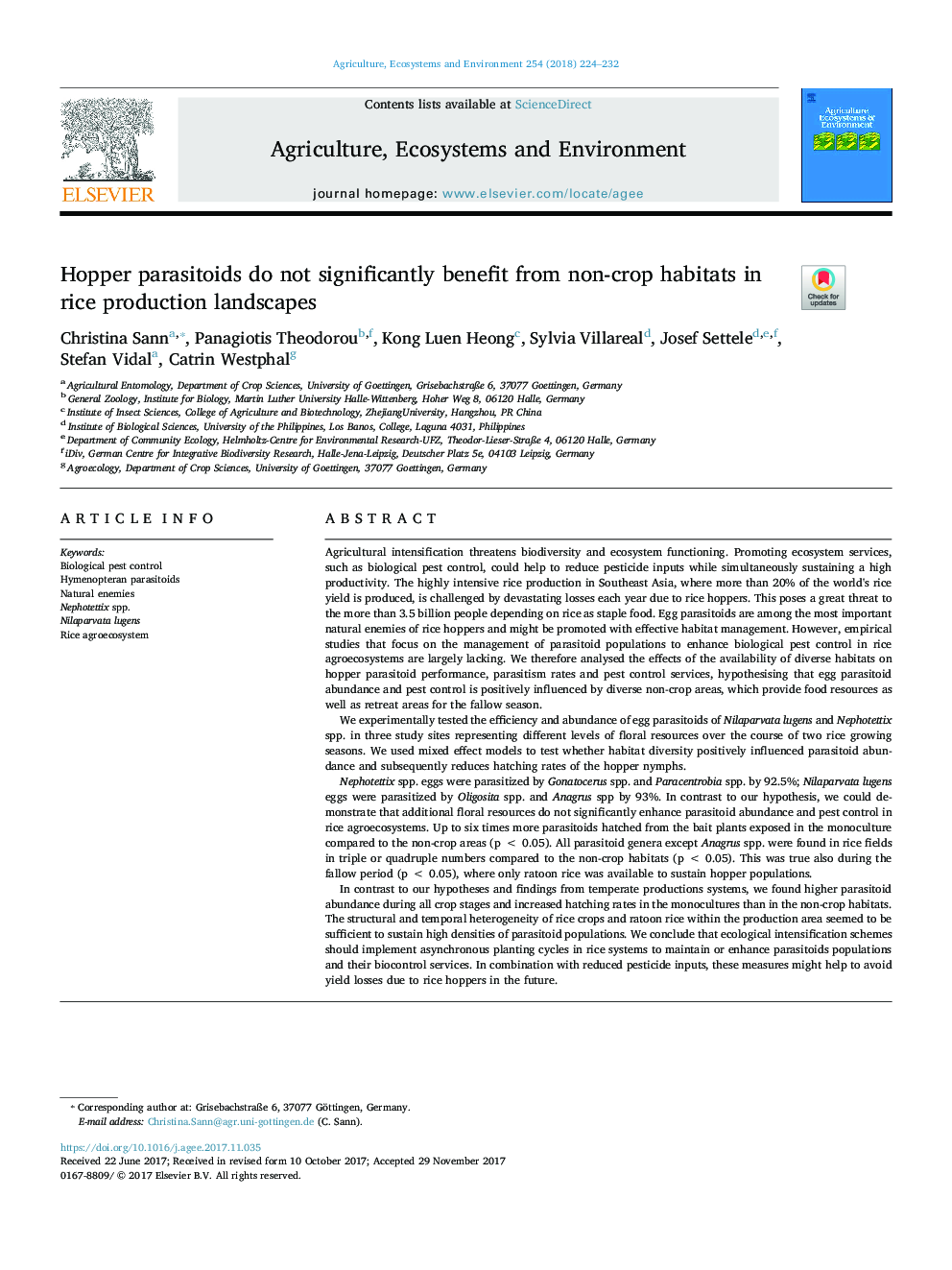| Article ID | Journal | Published Year | Pages | File Type |
|---|---|---|---|---|
| 8487218 | Agriculture, Ecosystems & Environment | 2018 | 9 Pages |
Abstract
In contrast to our hypotheses and findings from temperate productions systems, we found higher parasitoid abundance during all crop stages and increased hatching rates in the monocultures than in the non-crop habitats. The structural and temporal heterogeneity of rice crops and ratoon rice within the production area seemed to be sufficient to sustain high densities of parasitoid populations. We conclude that ecological intensification schemes should implement asynchronous planting cycles in rice systems to maintain or enhance parasitoids populations and their biocontrol services. In combination with reduced pesticide inputs, these measures might help to avoid yield losses due to rice hoppers in the future.
Related Topics
Life Sciences
Agricultural and Biological Sciences
Agronomy and Crop Science
Authors
Christina Sann, Panagiotis Theodorou, Kong Luen Heong, Sylvia Villareal, Josef Settele, Stefan Vidal, Catrin Westphal,
